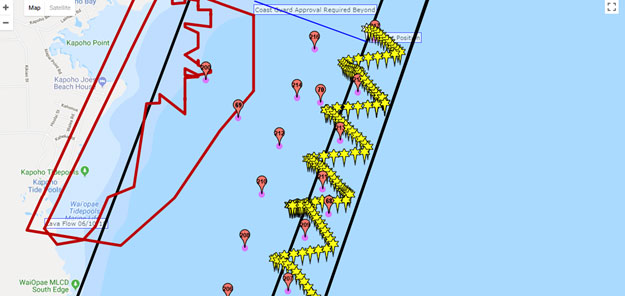Going Where No Human Should: Wave Gliders Meet Hawaii’s Kilauea Lava Flow
Liquid Robotics — June 25, 2018
We’ve all seen the devastating images and videos of lava flowing from the Kilauea volcano. Neighborhoods have been destroyed, the Kapoho Bay is now filled with lava, and the shape of the Hawaii Island has changed permanently. As a company with roots on the Island, our thoughts are with the Hawaiian people, especially those whose lives have been affected forever.

Kapoho Bay before and after the lava flow from the Kilauea eruption
With this disaster occurring in a place we call home, we didn’t want to just stand by. We wanted to help. We decided to mobilize our Wave Gliders to help scientists understand the impact of the lava on the ocean and the marine life. Interesting, most of the volcano flow data collected measures the volcanic eruption’s impact on land and air. Very few scientific measurements have been collected on the impact of the lava flow on the ocean and its’ ecosystem. It’s extremely rare to measure a live volcano flow into the oceans (only a hand full of instances are on record). This is where our Wave Gliders enter the picture.
Two Wave Gliders collect live data from the lava plume in Kapoho Bay
Working with researchers from the University of Hawaii at Hilo, U.S. Geological Survey’s Hawaiian Volcano Observatory (USGS-HVO) and Massachusetts Institute of Technology (MIT), two Wave Gliders with integrated sensors and cameras swam off to measure the water conditions, air quality and underwater acoustics. It’s a rare opportunity to measure the impact of a live lava flow on water temperatures, coral reefs, fish populations and other marine life. Additionally, measuring laze (lava haze) from the ocean will provide insights to the air quality and patterns caused by the hazardous toxic fumes. Check out one of our first images from near the lava flow.

The Wave Glider’s course for collecting data from the lava flow
Our two systems are operating outside of the restricted areas and on a three-week mission approved by the U.S. Coast Guard. By using unmanned, autonomous vehicles we are able to safely go where no human wants to—near the live lava flow. The Wave Gliders will repeat a precise, zig-zag course collecting data continuously.
For Kilauea Volcano mission updates, check out Twitter, @LiquidRobotics and our Facebook page. For more details on the Wave Glider mission, read our press release.
